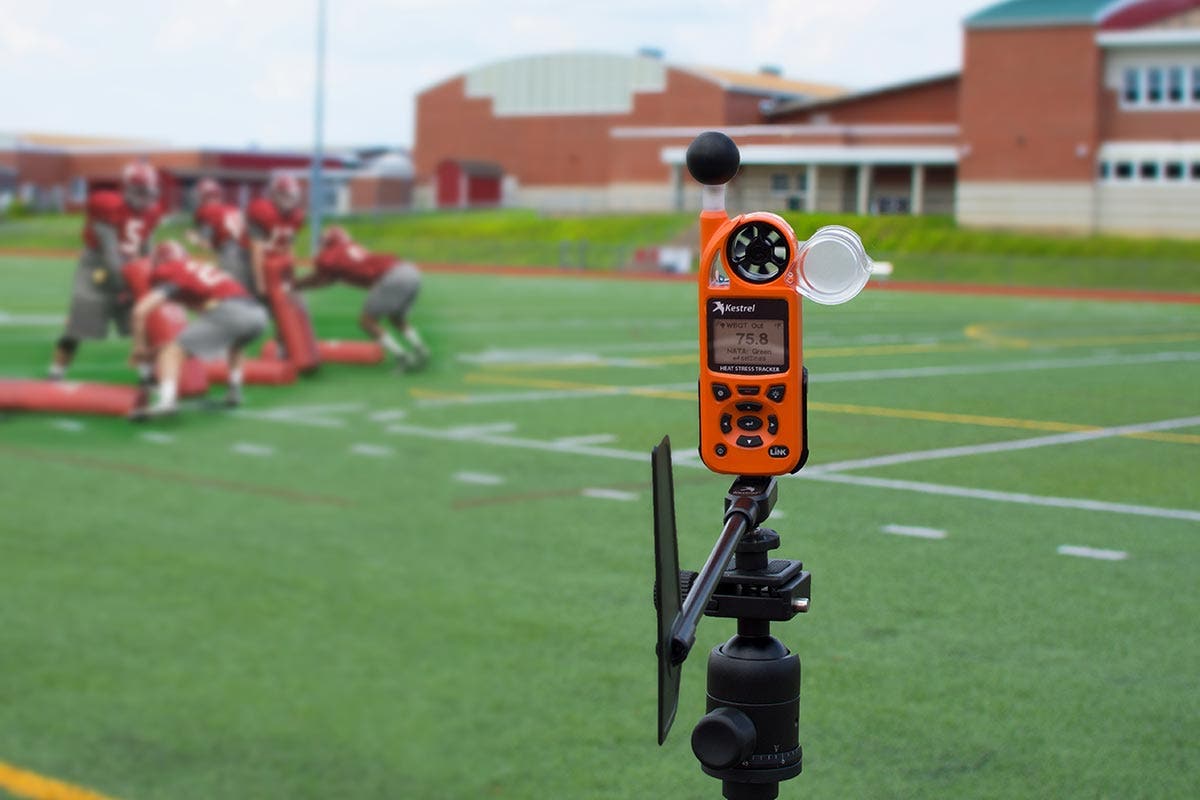Heat Stress Safety for Student Athletes
Monica Devlin Comments

There have been 550 fatalities among high school athletes between 1982-2015 resulting from exertional heat stress and related injuries.
Tragedy like this can be prevented.
UConn's Korey Stringer Institute recently released the findings from a National High School Sports Safety Study. Studies show that implementing evidence-based best practices and policy that include monitoring WBGT significantly reduces the risk of heat-related injury and illness.
It is critical that school sports programs take steps to protect student-athletes and prevent exertional heat stress.
“It doesn't cost much to save lives. You can get all of the equipment you need – plastic cold water immersion tubs, ice, rectal thermometers, advanced outdoor weather meters, automatic defibrillators – for under $2000. That's a very small price to pay..."
-Douglas Casa
PhD, ATC, FACSM, FNATA
Chief Executive Officer, Korey Stringer Institute
Department of Kinesiology, UConn
Easily monitor WBGT and set alerts to detect unsafe conditions. Save lives and reduce heat stress injuries with the Kestrel Heat Stress line.
Source:
State Level Implementation of Health and Safety Policies Pertaining to Preventing Sudden
Death and Catastrophic Injury in Secondary School Athletics
William M. Adams, PhD, ATC; Samantha E. Scarneo, MS, ATC; Douglas J. Casa. PhD, ATC.
Korey Stringer Institute, Department of Kinesiology, University of Connecticut. Storrs, CT. August 2017
About author
-
 How Does Temperature Monitoring Improve Greenhouse Conditions for Plant Growth?
How Does Temperature Monitoring Improve Greenhouse Conditions for Plant Growth?
-
 Announcing the Kestrel® DROP D1 with Probe: The Ultimate Tool for Precision Temperature Monitoring
Announcing the Kestrel® DROP D1 with Probe: The Ultimate Tool for Precision Temperature Monitoring
-
 Understanding Equilibrium Moisture Content and Why It Matters for Construction
Understanding Equilibrium Moisture Content and Why It Matters for Construction
-
 Kestrel Adds Vapor Pressure Deficit to the Kestrel 5500FW: Advancing Fire Weather Science
Kestrel Adds Vapor Pressure Deficit to the Kestrel 5500FW: Advancing Fire Weather Science
-
 Keeping Canines Cool and Comfortable: How the Pennsylvania Bureau of Dog Law Enforcement Utilizes Kestrel® Meters & DROP Data Loggers
Keeping Canines Cool and Comfortable: How the Pennsylvania Bureau of Dog Law Enforcement Utilizes Kestrel® Meters & DROP Data Loggers
